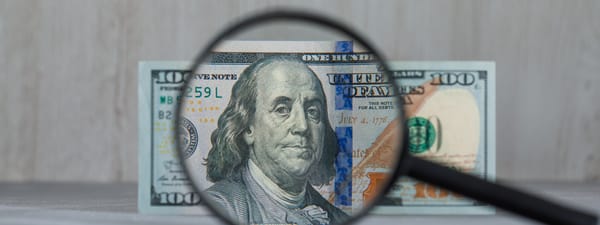How to Transfer Large Amounts to Africa Without Triggering Regulatory Reviews

Over the years, even through the harshest global economic downturns, one financial flow has remained steady: the money migrants send home.
We’ve got the numbers to back this up. As per a recent report, more than 200 million diaspora members send money home each year, offering critical support to more than 800 million family members.
As global remittance flows are on the rise, OAPay is ensuring our growing African immigrant community stays connected and supported. Along with being ranked as one of the best apps to send money abroad, OAPay also takes the stress out of large money transfers.
That’s right. One of the most common questions we get asked by our users is: "How much can I send to Africa from the UK or the US without raising any compliance alerts?”
With this post, we are putting to rest all your doubts about large money transfers. We are discussing transfer limits, regulatory checks in the UK and the US, and best practices to send large sums of money to Africa.
First up, why are there limits on transfers?
Think of transfer limits as a structural shield in today's increasingly digital world.
Whether you are sending money home or making business payments, large transfers to Africa from the UK or the US attract scrutiny from financial institutions and regulators on both sides.
Limiting how much money can be moved at once is essential for:
- Combatting fraud
Transfer caps are the first line of defense, flagging unusually large or suspicious transactions for review. Capping transfer sizes (whether daily, weekly, or monthly) helps prevent fraud and ensure illicit funds don’t slip through the cracks. - Complying with mandates
On the regulatory front, transfer caps help financial institutions and transfer providers to comply with Anti-Money Laundering (AML) mandates and global standards like those from the Financial Action Task Force (FATF). These include verifying the identities of senders (KYC) and suspicious activity reporting. - Minimizing operational risks
Processing high-value transactions involves exposure to cyber threats and scams. Imposing transfer limits helps entities minimize risk and potential losses from scams or cyber attacks.

KYC verification tiers explained
As a regulatory requirement, most money transfer service providers have Know Your Customer (KYC) checks in place. The KYC process is carried out to verify your identity before processing the transfer.
At OAPay, we use tiered KYC levels, where the more information you provide, the higher your transaction limits.
For instance, if you share the required verified ID, and upload proof of address, you can send up to £/$5,000 in a day. Additionally, if you also share information on the source of funds, you can unlock a daily limit of £10,000 and $8,000 on international money transfers from the UK and the US respectively.
How much money can I send from the UK to Africa?
The UK has not introduced any limits on the transfer of money internationally.
That said, large transactions (usually above £10,000) are closely monitored by official bodies, such as HM Revenue & Customs (HMRC) and the Financial Conduct Authority (FCA), to check for money laundering and other illegal
activities. In such cases, you will be asked to furnish details about the sender and recipient of the money.
How much money can I send from the US to Africa?
As per the federal law in the US, cash transactions over $10,000 in a single day must be reported to the Financial Crimes Enforcement Network (FinCEN) through a Currency Transaction Report (CTR). FinCEN analyzes these CTRs to identify and prevent money laundering and other financial crimes.
Additionally, remittance providers may set their own caps, limiting the daily transactions for security and compliance purposes.
Best practices for making large transfers to Africa
As we have seen so far, large international transfers often trigger additional verification steps. We've put together a checklist that you can follow to provide the details needed upfront and avoid any hold-ups.
- Choose licensed money transfer providers like OAPay
- Complete your highest KYC tier before initiating the transfer
- Keep valid documents ready, like government-issued ID (passport or driver's license), proof of address and in some cases, bank statements, pay slips, or tax returns
- Split big transfers if advised
- Double-check recipient details to avoid rejections
OAPay: The trusted app for large money transfers
Don’t let large international money transfers stress you anymore. OAPay lets you send money in a few taps, no matter where you’re sending to or how much you’re transferring.
Our full-service suite, coupled with financial tools and features like zero commission fees and unbeatable exchange rates, has made us the preferred choice for large money transfers.
The best part? You can stay up-to-date on the status of your transfer until your money reaches your recipient.
Sign up today and send large money transfers with zero markups.
FAQs:
1. What documents might be required for large transfers to Africa?
For making large transfers to Africa, be sure to keep the documents below handy:
- Government-issued IDs, like a Resident Permit or State ID
- Proof of address, like a utility bill or a lease agreement
- Passport (UK, US, Nigeria, Ghana, Kenya, etc.)
2. What is considered a “red flag” when sending money abroad?
Regulators keep an eye out for suspicious activities and unusually large amounts. Some of the international money transactions that get flagged for further investigation include transfers to unknown recipients and sending funds to high-risk regions.
3. What’s the maximum amount I can send to Africa without triggering extra checks?
While there is no fixed cap on transfers, limits may vary depending on the country you are sending to, applicable regulations, and your transfer provider’s rules. Most transfer services and banks will require additional documentation for amounts above £10,000 in the UK or $10,000 in the US.




